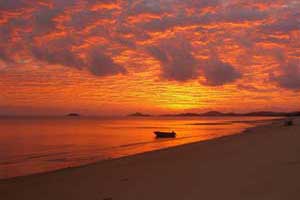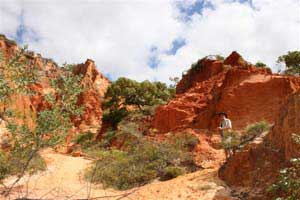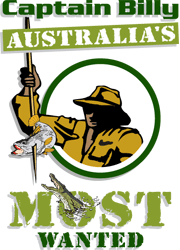|
day 1
 Cairns - Cape Tribulation - Daintree - Lions Den Hotel - Cooktown Cairns - Cape Tribulation - Daintree - Lions Den Hotel - Cooktown
- Day 1 gets off to an early morning start (7.00am) as we head north enjoying the magnificent coastal drive to Hartley’s Creek Crocodile Farm which claims to be the best place to see crocodiles and native wildlife in Tropical North Queensland.
- From the crocodile farm we travel on to The Lion's Den Hotel which is situated on the coastal road from Cairns to Cooktown. We simply cannot drive past the hotel, a stop here is an absolute must to admire the collection of memorabilia and of course to have a cold beer to wash down the dust inhaled on the road.
- We travel on; this time through the World Heritage Daintree Rainforest which offers a diverse and beautiful display of scenery and is home to the largest range of plants and animals on earth. The rainforest covers an impressive 1200 square kilometres.
- Travelling through the Daintree Rainforest we then travel over the soaring heights of the Bloomfield Track into Cooktown for the evening.
- Cooktown is a historic town and is where Captain Cook first landed. Cooktown wears its name with pride and was the site of the first white 'settlement' in Australia, when Captain James Cook, having accidentally struck the Great Barrier Reef off the coast north of Cape Tribulation, struggled up the coast and beached the H.M. Barque Endeavour on the shores of the Endeavour River.
- Enjoy a relaxing nights accommodation at Endeavour Falls
day 2/3
 Lakefield National Park - Endeavour River - Laura - Kalpower Lakefield National Park - Endeavour River - Laura - Kalpower
- Day 2 commences from Endeavour, where we travel along routes with more stunning native scenery to Laura to visit Split Rock Gallery and view stunning Aboriginal Art.
- We leave Split Rock Gallery and head through Lakefield National Park. Lakefield National Park is renowned for its vast river systems and spectacular wetlands. In the wet season the Normanby, Morehead and North Kennedy rivers and their tributaries join to flood vast areas, eventually draining north into Princess Charlotte Bay. During the dry season, rivers and creeks shrink, leaving large permanent waterholes, lakes and lagoons that attract a diversity of animals, particularly waterbirds. To the north, the park features impenetrable mangroves along the estuaries and coastline of Princess Charlotte Bay. Behind the coast are extensive salt flats and the marine plains that give way to inland tracts of eucalypt and paperbark woodlands. Fringing many of the river banks and streams are magnificent, tall paperbark trees and patches of gallery forest, a type of rainforest. The landscape of Lakefield National Park is of major Aboriginal cultural significance. Sites associated with occupation, ceremonies and stories of ancestral spirits occur throughout. The area is also rich in European cultural heritage, with associations with early explorers, geologists and surveyors, and tangible links to the establishment of the Palmer River Goldfields and early cattle industry.
- Our first camping night is amidst the tranquil setting of the Kalpower Ranger Station on the banks of the Normanby River. This is a great opportunity for bush walks and fishing.
day 4
Archer River
- Travel east through Lakefield National Park onto Archer River, which is one of the largest rivers on the Cape. The central feature of the park is the river scenery. Even in the dry season the Archer runs at a moderate rate and is the haunt of a large number of crocodiles. The swamps and lagoons are alive with ducks, pelicans and other water fowl, also woodlands Kangaroo and bush turkeys.
Continue...
|



